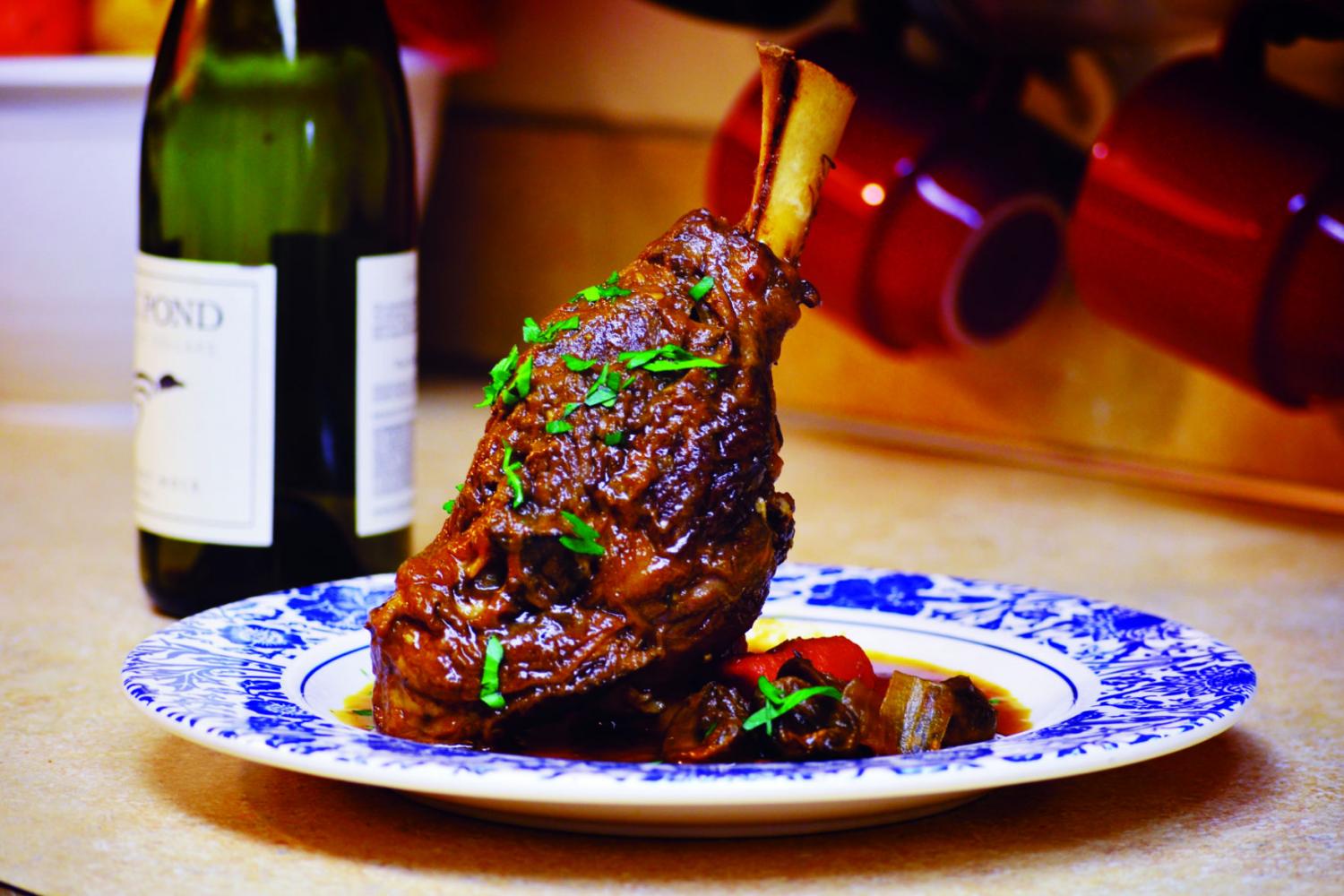Stewing the winter away
December 3, 2014
Having grown up near the equator, it was always hot and humid with a low of maybe 80 degrees on a really “cold” night and a high of sweaty-uncomfortable during the day.
This meant that there was never any urge to a drink a gut-busting Imperial Stout nor did we really ever want to eat heavy, rich stews laced with all manner of animal fat and protein. With winter having arrived, the color green becomes near absent as brown takes over the plate.
The best thing about stews and braises is that they can be made in a large batch and only get better over time. They require minimum attention and are relatively cheap to make. Follow the following tips for a warm, heady bowl of the good stuff.
First, select your protein. This is the season for cheap cuts, and when I mean cheap, think of all those stewing cuts that are tough with a ton of connective tissue. This means brisket, chuck, short ribs, lamb shanks, or chicken thighs.
Be adventurous. Cow tongue and heart are one of the cheapest cuts per pound, and when coaxed with a slow long braise, yields incredibly flavorful and tender meat. Stop being squeamish — an animal already died for you so respect it by letting nothing go to waste.
Second, find yourself either a crock pot or a Dutch oven (or any thick heavy pot). A proper cooking vessel means even heat over a long period without the bottom sticking and burning. Beg, borrow or steal as needed.
Third, go through your pantry for long forgotten dried herbs and apply liberally. Fresh is better, but seriously, $3 for a packet of thyme? That’s almost worse than tuition fees.
Four, stock up on vegetables that grow below the ground, such as carrots, potatoes, turnips, parsnips, sweet potatoes, onions, garlic, mushrooms, and whatever else you like. Use aggressively because this is the stuff that’s going to make a difference between tender meat and delicious tender meat.
Five, achieve maximum umami extraction, that fifth flavor akin to “savory.” Consider things like dried shitake mushrooms (get at the Asian section or store in Moscow), tomato paste, anchovies, fish sauce, or pretty much any fermented sauce product to boost that stew.
These strongly flavored ingredients often meld into the background so for you odd people who don’t like anchovies “cause they smell” don’t worry, you wouldn’t know it was there.
Six, read and understand the Maillard browning reaction. Actually don’t, that takes an entire semester of food chemistry. Instead, take an extra minute to brown your meat (i.e. sear) and release all those delicious aromatics. Hear that sizzle when meat touches hot metal – essential for good living.
After your protein is evenly browned, set aside and dump the roughly cut vegetables into the same pot. Again, brown (though this time caramelize). I encourage you to throw in your tomato paste at this period and just stir around for a few minutes.
Seven, obtain for yourself a liquid to braise in. Heavy full-bodied wines of conspicuous quality is perfectly fine, even the bottle/jug/box that’s been sitting around since syllabus week. A heavy beer like a stout works extremely well — although make sure you save some for yourself.
If using, pour into the vegetables to deglaze (fancy term for scraping up the goodness that’s developed at the bottom of the pot). Let the alcohol boil and burn off.
Because obtaining cooking/drinking alcohol can be difficult, use stock. Make your own from leftover turkey, but the stuff at the store is fine. Use a bouillon cube if you’re strapped for cash. However, even if you do use alcohol, add stock to balance it out and top up with water to cover.
Finally, learn the virtue that is patience. Put the crock pot or burner to low, or if using an oven to around 300 degrees. Get on with your daily activities like snow fort construction, and come back later in the day. Adjust the seasoning to your liking (salt and pepper) and expect meat falling off the bone.
Eat an orange for dessert to avoid scurvy.



















